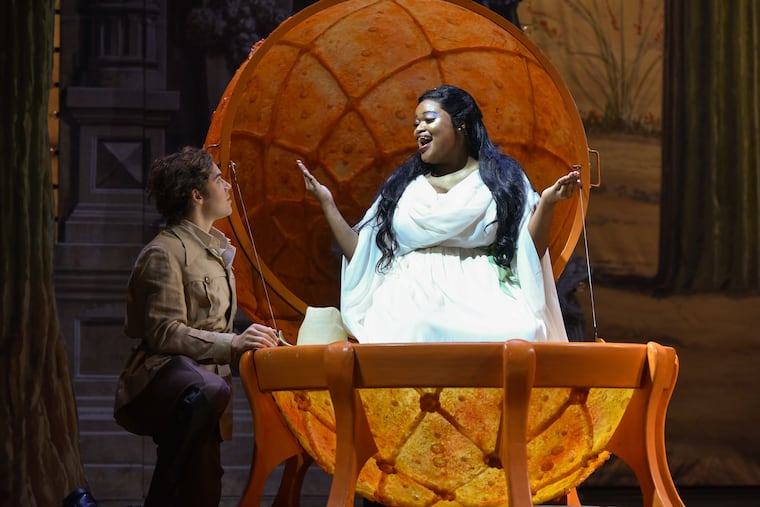Philadelphia arts groups and artists to receive $4 million from emergency COVID-19 fund
"But the challenge is far from over,” said one arts leader about the pandemic, which has left arts groups reeling.

The Mennonite Heritage Center is getting money, as is the Center for Art in Wood — and Opera Philadelphia and the Bearded Ladies Cabaret, too.
All told, 467 Philadelphia-area arts and culture groups plus more than a thousand individual artists are receiving a total of $4 million raised through the COVID-19 Arts Aid PHL Fund, a multidonor fund assembled in response to the pandemic.
When the pandemic shutdown hit in mid-March, concerts were canceled, fund-raising galas scrapped, and rental fees lost, leaving the entire arts and culture sector fighting for its life.
“Earned revenue of all kinds was abruptly cut off by social distancing,” said Maud Lyon, president of the Greater Philadelphia Cultural Alliance, one of several cocreators of the fund-raising effort. “This relief funding provides some financial help to organizations that had revenues screech to a stop.”
» READ MORE: Nutcracker won’t happen this year, Pennsylvania Ballet says
The fund drive was geared toward helping small and midsize groups. About $3.25 million went to 215 midsize arts culture organizations (with an average award of $15,115), and nearly $250,000 was sent to 252 small groups in the form of grants up to $1,000.
Individual artists — 1,025 of them — are receiving grants of up to $500 each.
The awards to organizations range in size. On the low end, Power Street Theatre in North Philadelphia was given $1,000. The largest grant, $70,000, went to Eastern State Penitentiary Historic Site.
The fund ended up being able to make an award to every group that applied for support and met eligibility requirements for size and location, nonprofit status, and other guidelines, Lyon said.
David Bielenberg, executive director of the Philadelphia Gay Men’s Chorus, said the group was “thrilled” to receive a $5,000 grant from the COVID-19 Arts Aid PHL Fund. The chorus had to cancel concerts and a major fund-raiser, producing a $65,000 shortfall in earned and contributed income this spring.
With the new grant plus other support from the Paycheck Protection Program, the Presser Foundation, the Pennsylvania State Council on the Arts, and individual gifts (not to mention lowered expenses), the group now expects to end its fiscal year without a deficit.
» READ MORE: Kimmel Center, seeing no earned revenue, cuts most of its staff
“But the challenge is far from over,” says Bielenberg. “Choral singing, by its nature, is considered by many health experts to be among the most high-risk activities for transmitting COVID-19. As a result, the ability to return to ‘business as usual’ for PGMC is significantly compromised until a vaccine is developed and widely available.”
Until then, the group is working virtually with programs like a new outreach program for Philadelphia-area students.
The COVID-19 Arts Aid PHL Fund was assembled with William Penn Foundation as the lead funder, kicking in $2.5 million. Other major support came from the Barra, Wyncote, Doris Duke, Connelly, Independence, John S. and James L. Knight, Lenfest, and Victory foundations.
In addition, the fund drew gifts from 400 individual donations in sizes as small as $3 and as large as six figures.
» READ MORE: Loss of Philadelphia Cultural Fund would hit arts organizations — and neighborhoods — hard
Having raised its money, the COVID-19 Arts Aid PHL Fund will cease to exist after being fully distributed sometime in July, Lyon said.
It was a “gesture of faith in the importance of the arts and culture community that it was created so quickly,” said Lyon.
The effort was assembled, she said, after GPCA surveyed its membership and many said the immediate hurdle was cash flow. But the $4 million infusion is not seen as a solution to how musical ensembles, dance troupes, museums, and neighborhood arts hubs can keep operating in the absence of ticket sales and other sources of earned revenue.
“This is stopgap funding and it helps, but it absolutely doesn’t solve the problem,” said Lyon. “The longer we have social distancing and cannot gather in any way, the deeper the crisis will become for arts and culture.”